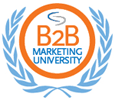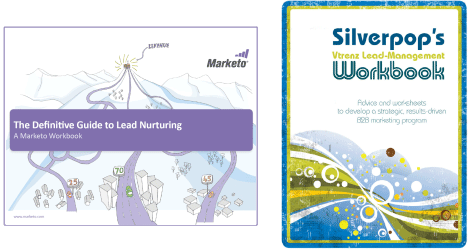As a response to my posts 7 Reasons Why Marketing Automation Projects Fail and Marketing Automation ROI, several people mentioned that the benefits of Marketing Automation are not just increased sales. They are also increased efficiency. That made me think: aren’t benefits either cost savings, or increased revenue?
Marketing Automation Increases Revenue
The key marketing performance indicators suggested by SiriusDecisions are all related to revenue:
- Marketing sourced pipeline
- Marketing influenced pipeline
- Investment-to-pipeline
- Investment-to-revenue
I believe there is a good reason for this: costs savings with Marketing Automation are marginal. The project itself will cost a fair amount of money, both for software as well as for expertise (either hiring an in-house expert, or hiring a marketing automation consultant). Will you save more than you’ve spent? I feel increased revenue is where the real benefits are. But let’s first take a look at efficiency and cost savings.
Marketing Automation & Efficiency
Especially large organizations often talk about efficiency increases as a result of marketing automation. Efficiency in itself is nice, but it’s hard to quantify: will it increase the quality of the work? How does quality impact the bottom line? Is productivity improved? Are there costs savings? Please explain to me the real and measurable benefit of efficiency gains.
Marketing Automation & Cost Savings
Cost savings may be the main result of efficiency gains. However, I don’t think that a marketing automation initiative has ever resulted in significant cost savings. The reason is: the large majority of marketing cost is people, and I have never heard of people being let go because marketing automation software eliminated their job. Maybe spending on lead generation can be better directed, so unprofitable programs can be cut. But in most large organizations there is a budget that needs to be spent: so if you cut on one program, you will spend more on another: more revenue, but no cost savings.
Where Do the Revenue Increases Come From?
That’s a valid question. I suggest three areas:
- More cost-effective lead generation
- Better conversion rates with lead nurturing
- More efficient sales force
Lead Generation: with close loop measurements, you can easily see the effectiveness of each lead generation campaign. One of the best examples is in Marketo’s “Secret Sauce” webinar. You improve your investment-to-pipeline ratio by focusing on the most cost-effective lead generation sources.
Lead Nurturing fixes funnel leakage. If you don’t properly nurture early-stage prospects, they will probably buy from a competitor. If you can increase conversion rates from inquiry to marketing qualified lead to sales-accepted lead, you get more marketing-sourced opportunities.
If sales receives better qualified and better educated leads, they can focus on the most promising opportunities. There are statistics that more sales people make their target if marketing automation does a good job nurturing and qualifying leads (I couldn’t find the source, if you know who published this research, please leave a comment).
Conclusion
So my conclusion is that the only metric that matters for Marketing Automation is increased revenue. I don’t claim that there can’t be any cost savings at all, just that they will be negligible compared to the increased revenue. I realize this is a fairly black-and-white statement, so please let me know what you think.

 There has been quite a bit of change in B2B marketing over the past couple of years. Buyers have moved online, which has had a major impact on the buying process. Prospects now have instant access to much more information, so marketing’s involvement reaches much further down the sales cycle: they need to nurture prospects with relevant content until they are sales-ready. Sales people are still very important, but they can focus on facilitating the buying process rather than distributing information.
There has been quite a bit of change in B2B marketing over the past couple of years. Buyers have moved online, which has had a major impact on the buying process. Prospects now have instant access to much more information, so marketing’s involvement reaches much further down the sales cycle: they need to nurture prospects with relevant content until they are sales-ready. Sales people are still very important, but they can focus on facilitating the buying process rather than distributing information.

 To generate demand for your products, it’s not enough to nurture the existing leads in your database. You also need a steady stream of fresh leads coming in. There are many ways to find these new leads: inbound marketing, search advertising, tradeshows, lead programs, etc. They all have their pros and cons, and most companies use a combination of strategies.
To generate demand for your products, it’s not enough to nurture the existing leads in your database. You also need a steady stream of fresh leads coming in. There are many ways to find these new leads: inbound marketing, search advertising, tradeshows, lead programs, etc. They all have their pros and cons, and most companies use a combination of strategies.